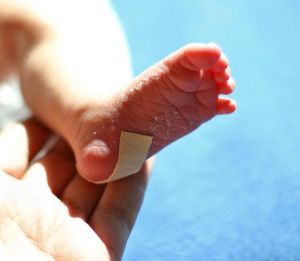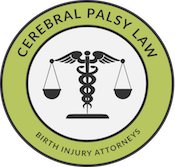What Are Neonatal Sepsis and Meningitis?
Neonatal sepsis and meningitis are dangerous infections that occur in newborn babies. When left untreated or undiagnosed, both infections pose serious and potentially life-threatening risks to newborn babies.
- Neonatal sepsis: Neonatal sepsis is a dangerous condition in which a newborn baby has an infection in his or her bloodstream. When a baby has sepsis, her immune system responds to an infection by attacking her own tissues and organs. Sepsis can cause brain damage by directly infecting the central nervous system, indirectly causing inflammation in the brain (encephalitis), or causing a severe drop in blood flow to the brain (septic shock). Sepsis often ultimately leads to seizures, meningitis, ischemia, brain injury, and cerebral palsy.
- Meningitis: Meningitis is a viral or bacterial infection in which the membranes that surround the brain and spinal cord become infected.
If your child suffered a birth injury such as cerebral palsy from neonatal sepsis, meningitis, or another infection, you and your child may have grounds for a medical malpractice claim. Call our Michigan birth injury lawyers toll-free at (888) 592-1857, complete this online contact form, press the live chat button to the left of your screen, or press the following contact button. Our Michigan birth trauma attorneys will provide you with a free legal evaluation of your child’s cerebral palsy case and help you answer your questions.
What Causes Neonatal Sepsis and Meningitis?
- Another infection: For instance, meningitis can trigger sepsis and sepsis can trigger meningitis.
- Maternal infection: A mother carrying certain viral or bacterial infections can transmit them to her baby. Fetuses become infected through direct contact with the uterus or through contact with the birth canal during delivery. The following are types of infections that can cause neonatal sepsis and meningitis:
- Group B Streptococcus (GBS)
- Herpes simplex virus (HSV)
- Chorioamnionitis
- E. coli
- Pseudomonas
- Klebsiella and Enterobacter species
- Staphylococcus (Staph) infections
- Premature birth: The younger and smaller a baby is after birth, the greater chance he or she has for developing infection.
- Premature rupture of membranes (PROM): The amniotic fluid protects a baby from infection, so a baby is exposed and vulnerable when a mother’s membranes break open early.
What Are the Risk Factors for Neonatal Sepsis and Meningitis?
The following factors predispose a baby to neonatal infections like sepsis and meningitis:
- Traumatic delivery
- Presence of maternal infection
- Hypoxic ischemic encephalopathy (HIE): Insufficient flow of oxygen to the baby’s brain may result in infection.
- Prematurity: Younger babies are likelier to become infected.
- Low birth weight: Smaller babies cannot fight off infection like more developed babies.
- Premature rupture of the membranes (PROM): If the amniotic sac breaks open early, a baby risks contracting an infection.
- Urinary tract abnormalities in the mother
- Maternal galactosemia: A genetic disorder that makes it difficult to break down sugars.
What Injuries Are Associated with Neonatal Sepsis and Meningitis?
- Brain damage
- Cognitive impairments
- Cerebral palsy
- Edema (fluid buildup in the brain)
- Brain abscesses (pus-filled pockets)
- Cerebral palsy
- Developmental delays
- Seizure disorders
- Learning disabilities
What Are the Signs and Symptoms of Neonatal Sepsis and Meningitis?
Sepsis:
- Seizures
- Jaundice
- Respiratory distress: Breathing problems including fast breathing, respiratory failure, failure to breathe when on a ventilator, or periods of apnea (baby stops breathing for 20 seconds or more). These conditions will often cause cooling and a bluish tint to the extremities.
- Bradycardia (slow heart rate)
- Tachycardia (increased heart rate)
- Temperature instability
- Low blood pressure
- Neurological changes: Irritability, lethargy, and non-responsiveness
- Low urine output
- Lethargy and hypotonia (decreased muscle tone)
Meningitis:
- Failure to respond to antibiotic therapy
- Respiratory depression
- Growth of a soft spot (bulging fontanelle)
- Fast head growth
- Separation of parts of the skull
- Weakness on one side of the body
- Seizures
How Are Neonatal Sepsis and Meningitis Diagnosed and Treated?
 It is very important that neonatal sepsis and meningitis are diagnosed and treated promptly to avoid significant injury, brain damage, or death. Because the associated injuries are so severe, doctors should begin treatment even if they only suspect the presence of neonatal sepsis or meningitis.
It is very important that neonatal sepsis and meningitis are diagnosed and treated promptly to avoid significant injury, brain damage, or death. Because the associated injuries are so severe, doctors should begin treatment even if they only suspect the presence of neonatal sepsis or meningitis.
The only true way to diagnose neonatal sepsis or meningitis is through blood testing, but often times the results of the blood tests are slow and unreliable. For this reason, physicians must do clinical assessments and lab tests to determine if the baby is at risk of developing neonatal sepsis or meningitis. If the baby is at risk, physicians must initiate treatment while waiting for the test results. If a baby’s blood culture is negative for sepsis and meningitis but doctors suspect presence of infection, tests should continue and the physician should prescribe antibiotics. Since the signs and symptoms of sepsis can be subtle, any abnormalities in a baby’s behavior should be used as potential indicators of neonatal sepsis or meningitis.
Other ways to test for neonatal sepsis and meningitis include:
- Testing cerebral spine fluid (CSF)
- Testing for inflammatory markers
- Urine culture
Neonatal Sepsis Video
In this video, the Michigan Cerebral Palsy Attorneys on-site registered obstetrical nurse Andrea Shea discusses neonatal sepsis. She covers the causes of neonatal sepsis, the signs and symptoms of neonatal sepsis, the relationship between neonatal sepsis and cerebral palsy (CP), how instances of medical malpractice cause neonatal sepsis, and more. To view the video, press the play button on the following link:
Legal Help for Neonatal Sepsis, Meningitis, and Cerebral Palsy:
Medical professionals are obligated to conduct thorough tests to determine the risks for or presence of neonatal sepsis and meningitis. We urge patients who were not aptly tested for or warned about the dangers of neonatal sepsis, meningitis, or another infection to seek legal help in order to secure financial support.
 The following errors constitute negligence and may serve as grounds for a medical malpractice case:
The following errors constitute negligence and may serve as grounds for a medical malpractice case:
- Failure of a medical professional to diagnose and treat maternal or fetal conditions or infections that lead to neonatal sepsis or meningitis
- Failure of a medical professional to properly inform the mother about the condition and alternative delivery options
- Failure of a medical professional to properly assess and test for the risks factors, causes, signs, and symptoms of neonatal sepsis and meningitis
- Failure to immediately begin treatment when neonatal sepsis or meningitis is detected or diagnosed
- Failure to prescribe antibiotics during delivery in order to prevent infection from spreading to the baby
If your child has been diagnosed with cerebral palsy as a result of neonatal sepsis or meningitis and you believe medical professionals violated the standard of care in one or more of these ways, call us or fill out our online contact form. We’ll determine if you have grounds for a medical malpractice case. Contact us in any of the following ways:
We handle cases throughout the U.S.
Call our offices toll-free at (888) 592-1857
Press the Live Chat tab to the left
Complete this online contact form
Sources:
- Edwards MS. Clinical features and diagnosis of sepsis in term and late preterm infants. In: UpToDate. Kim MS (Ed), UpToDate, Waltham, MA, 2014.
- Polin RA, Committee on Fetus and Newborn. Management of neonates with suspected or proven early-onset bacterial sepsis. Pediatrics 2012; 129:1006.
- Cohen-Wolkowiez M, Moran C, Benjamin DK, et al. Early and late onset sepsis in late preterm infants. Pediatr Infect Dis J 2009; 28:1052.
- Edwards MS, Baker CJ. Sepsis in the Newborn. In: Krugman’s Infectious Diseases of Children, 11th ed, Gershon AA, Hotez PJ, Katz SL (Eds), Mosby, Philadelphia 2004. p.545.
